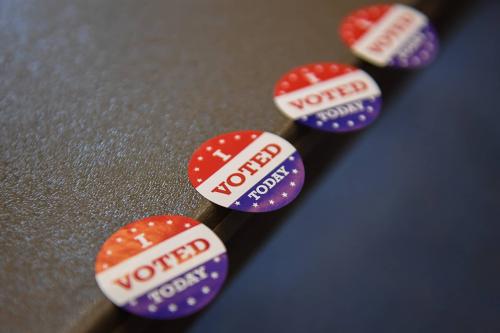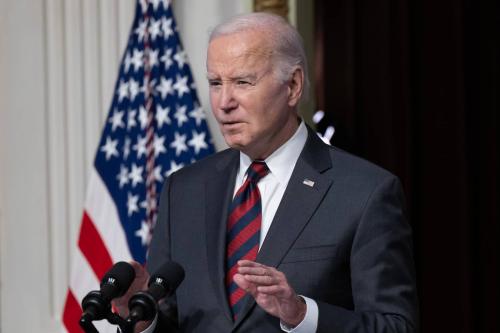Policy differences aren’t going to decide the presidential election, much to the dismay of think-tank scholars. The overwhelming differences between Donald Trump and Hillary Clinton in character, demeanor, world view, and experience are likely to be far more important.
Given Mrs. Clinton’s lead in the polls, however, it’s worth looking at what her campaign positions reveal not only about her substantial differences with Mr. Trump but also for clues to how she might approach economic policy as president.
Mrs. Clinton recognizes the challenges posed by the distressingly slow pace of economic growth but hasn’t clearly articulated a growth strategy–perhaps because the economists she relies on are still looking for a formula. She has offered some ingredients of a growth strategy: a smattering of targeted tax breaks, a big push on education (from pre-K through college) that some experts say should pay off in faster productivity growth, a big increase in federal spending on infrastructure that she says will add jobs soon and faster productivity growth in the future, and a commitment to immigration reform. Economist Mark Zandi, using Moody’s Analytics macro-economic model, found that immigration reform is key to the predictions that Mrs. Clinton’s proposals would boost economic growth. In contrast to Republicans, Mrs. Clinton does not appear to favor broad tax breaks for business to spur private investment; once upon a time, candidates would call for making permanent the tax credit for research and development, but Congress finally did that in 2015. She doesn’t see scaling back regulation as a way to improve economic growth.
Dealing with the large and growing federal debt is not her top priority. But then, politicians often say one thing and do another once elected. George H.W. Bush raised taxes after vowing not to. Bill Clinton abandoned a middle-class taxcut. Mrs. Clinton has been careful to match nearly every proposed tax credit and spending increase with an offsetting tax increase (mainly on upper-income households) or spending cut. But she has expressed little interest in addressing the growth in federal debt that lies ahead absent a fiscal course correction.
The widening gap between winners and losers in the U.S. economy is a major focus for Mrs. Clinton, and she doesn’t see faster economic growth as an adequate remedy. Ingredients in her recipe: Use the tax code more aggressively than it already is to reduce inequality. Boost Social Security benefits for the lowest-income recipients. Raise the federal minimum wage.
Bill Clinton famously declared in his 1996 State of the Union address that “the era of big government is over.” It wasn’t, of course. Hillary Clinton clearly favors using the power of government in all respects–taxes, spending, regulation, incentives for states and businesses–to help steer the U.S. economy toward what she considers a better place. That applies to using the tax code to make it harder for companies to move headquarters and jobs overseas and using the government’s regulatory muscle to keep Wall Street from the mistakes and risks that led to the Great Recession. One big unknown: How much of a say Wall Street critics Elizabeth Warren and Bernie Sanders would have in whom Mrs. Clinton appoints to financial regulatory posts.
On globalization, it’s hard to tell where Mrs. Clinton would end up as president. With an obvious eye on the antipathy toward trade treaties that motivated both Trump and Sanders voters during the primaries, she has said–as emphatically as she has said anything–that she opposes the Trans-Pacific Partnership deal that PresidentBarack Obama supports. She would probably bring a few high-profile anti-dumping or other cases against China early in her presidency to prove she’s tough. But when she promises to stop any trade deal that would kill jobs or hold down wages, does that mean she would support a treaty that she says doesn’t do that? And she has yet to explain exactly how she would equip U.S. workers to better cope with globalization–trends that will persist with or without trade treaties. In other words, it’s not clear how she will deliver on this proclamation: “The answer is not to rant and rave–or cut ourselves off from the world. That would end up killing even more jobs. The answer is to finally make trade work for us, not against us.”
Editor’s note: This piece originally appeared in the Wall Street Journal’s Washington Wire.




Commentary
Op-edWhat would Clintonomics bring? Breaking down Hillary Clinton’s economic policy
August 18, 2016